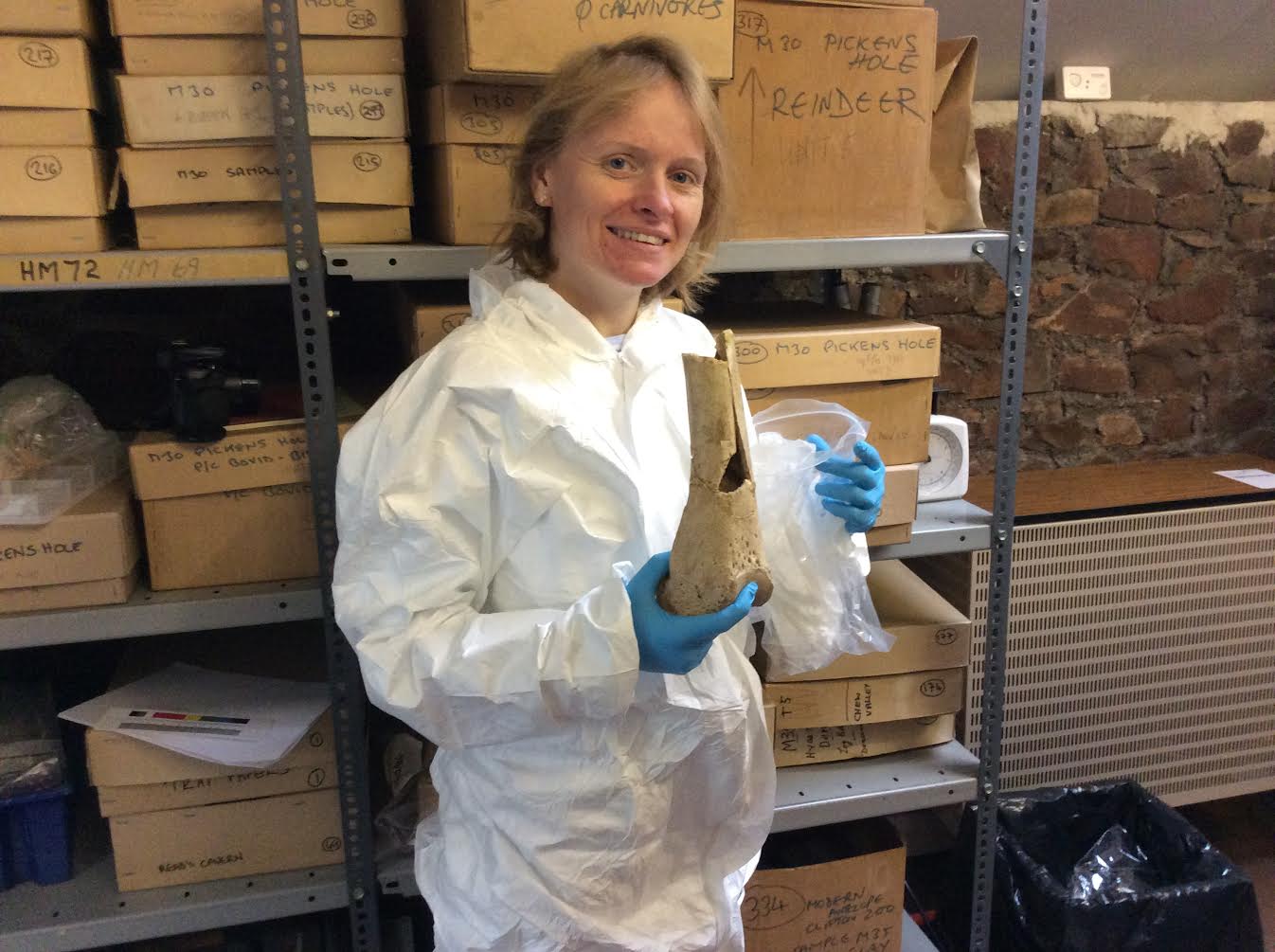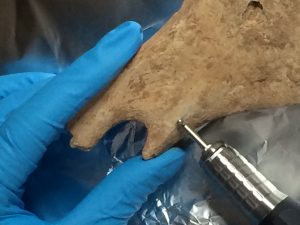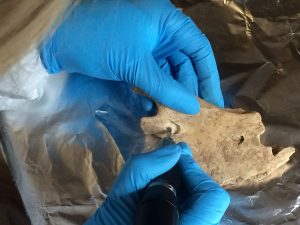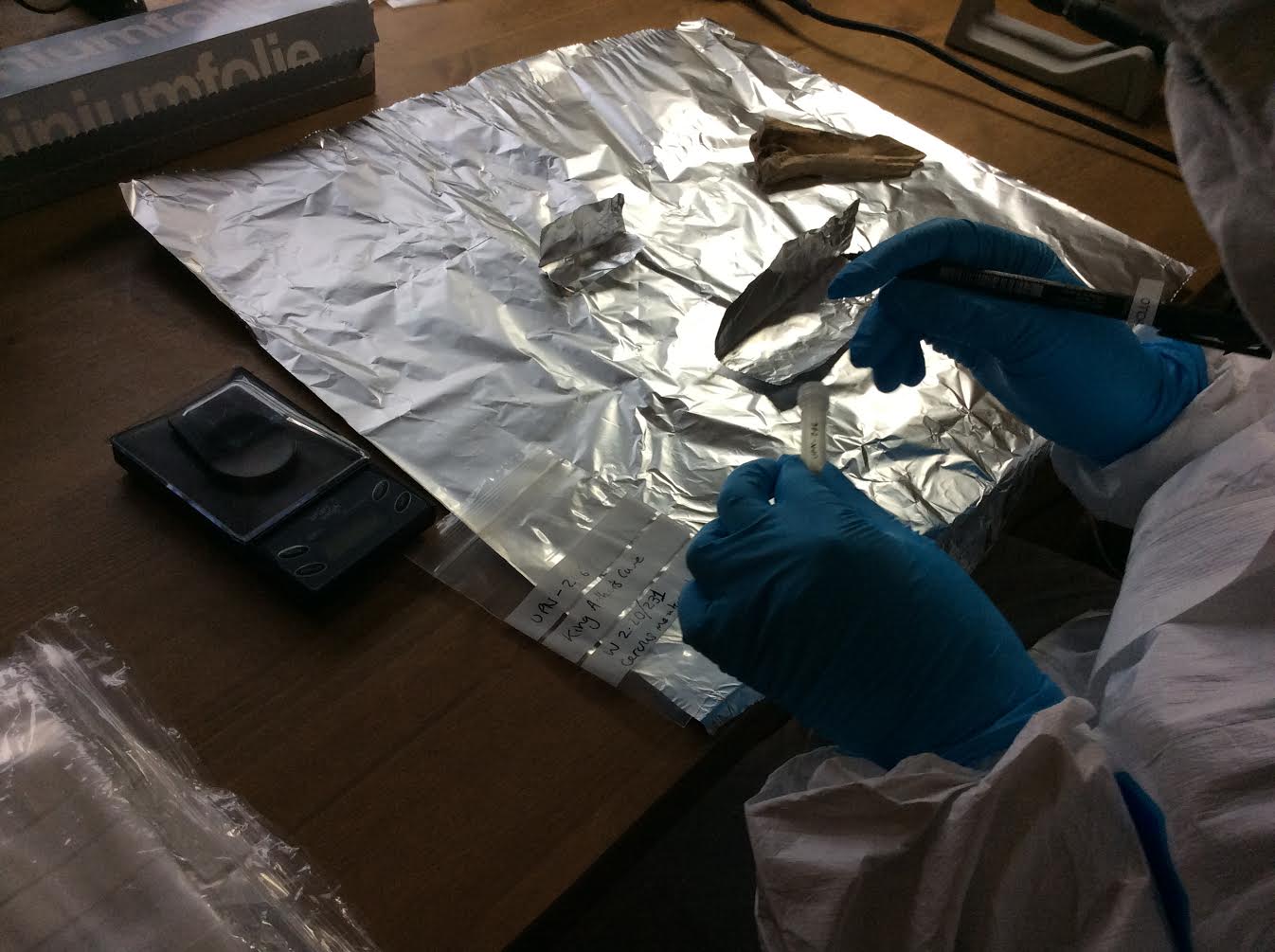
Photo: Allan Summerfield
The good news is that no animals or humans have been harmed recently, well not for a couple of thousand years in anyway, it’s not really a crime scene! This research is being headed up by Dr Rhiannon Stevens from the Institute of Archaeology, University College London and Dr Sophy Charlton from the Natural History Museum in London.

Photo: Allan Summerfield
They are making a return trip to the University of Bristol Spelaeological Society museum in the footsteps of their colleague Dr Hazel Read who came to view the material in Bristol in 2015. Their purpose was to sample material from both King Arthur’s Cave and Sun Hole. Sampling is being undertaken to obtain material that can be tested for DNA, Radiocarbon Dating (14C) and Oxygen and Nitrogen Isotope analysis.
The ‘Up North’ project* researchers are making investigations to look at evidence from material from the Late Upper Palaeolithic and Creswellian period, which is numerous in King Arthur’s Cave and Sun Hole. Both these sites provide evidence of the earliest occupation of humans after the last Glacial period (12-13,000 years BP). Samples were taken from large faunal species; Horse (Equus); Red Deer (Cervus elalphus) and Reindeer (Rangifer tarandus).

Photo: Alan Summerfield
Using the results from the from Oxygen and Nitrogen Isotope readings it is hoped to build up a picture of what the climate in Britain was like at the time. From a human perspective, was the climate or the availability of large fauna the most important factor for humans recolonising Britain? Samples were also taken to establish possible DNA similarities of the animals in Britain and to those on the continent.
In addition, Rhiannon and Sophy also examined bone material for cut marks which would indicate human interaction with the fauna. This would be evidence of humans being present during large mammal migrations from Europe after the last glacial period. The aim is to provide a better understanding of faunal movements which can be correlated with human activity of the same period.
The story does not end here, as the ‘Up North’ team have more research to carry out which will take them around the country and onto mainland Europe. Due to the importance of the collection held at the UBSS museum a further visit is already under way and we will continue to keep you updated on their progress.
*The UP-NORTH project is funded by the European Research Council and tries to understand the resettlement of northern Europe after the Last Glacial Maximum (ca. 26,500-19,000 years ago) and the subsequent diversification of the behaviour of those human groups in the context of climate and environmental change.

Photo: Allan Summerfield
Correspondent: Allan Summerfield
